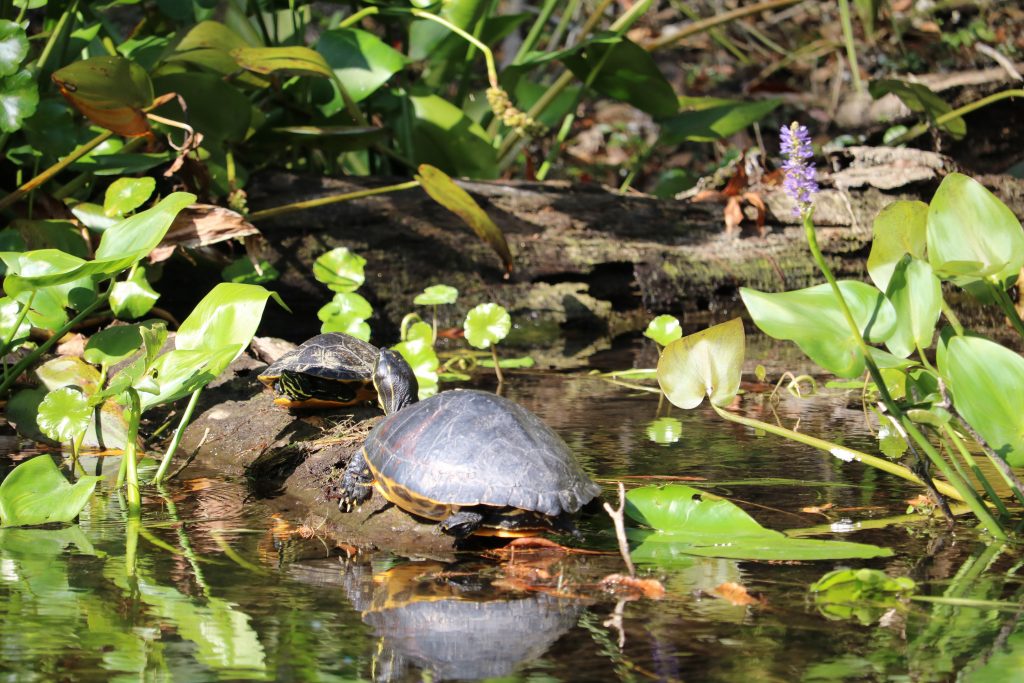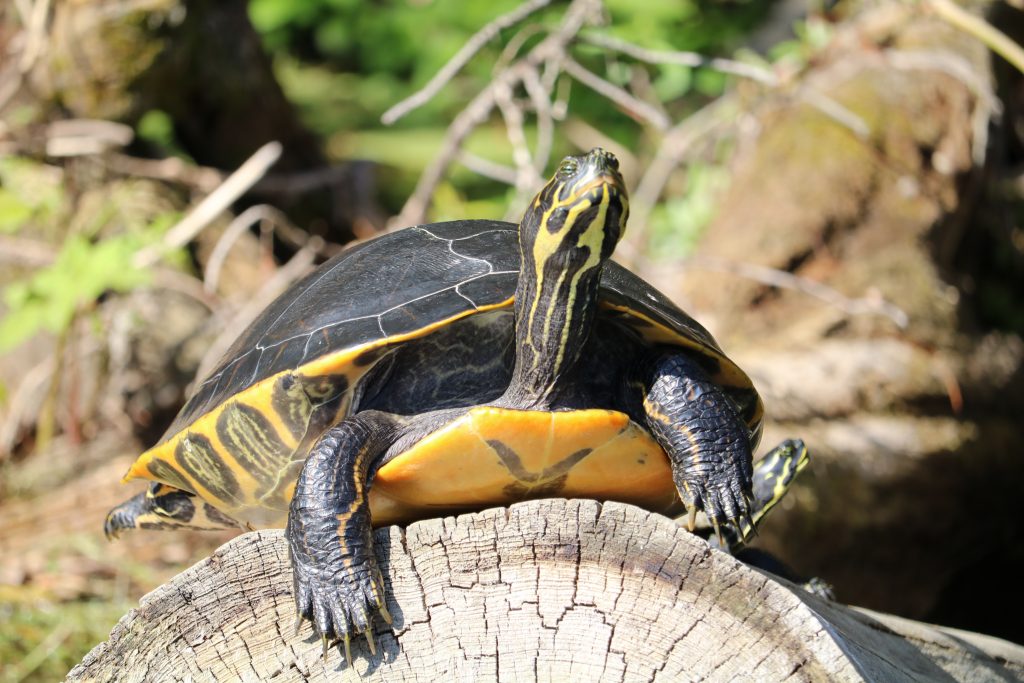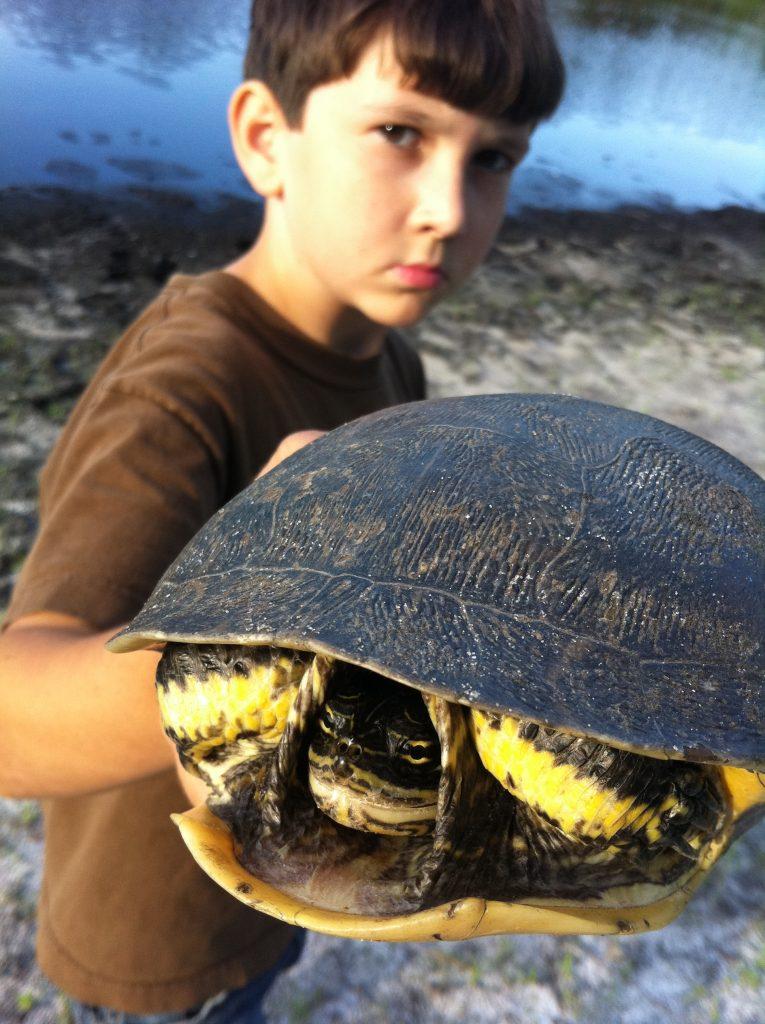Freshwater turtles are air-breathing reptiles. Like other reptiles, turtles are “ectothermic” or cold-blooded. Their internal temperature matches their surroundings.
They can hold their breath for long periods of time. Turtles have an organ in the roof of their mouth that allows them to taste and smell the air. Turtles can even smell underwater. They have webbed feet to help them swim.
All freshwater turtles lay eggs on land. They look for places that are away from predators. The female digs a hole to lay her eggs, then covers them up and returns to the water.
A turtle’s shell is their defense. Most shells are hard and part of the turtle’s skeleton. Softshell turtles do not have the outer layer defense and spend most of their time in shallow waters. Oxygen is moved through their leathery skin shell into their bodies.
Freshwater turtles are generally smaller than sea turtles. They can be found in marshland, swamps, rivers, streams, lakes, and springs. Turtles generally have a longer lifespan than other species in the wild. Some can live up to 70 years.



